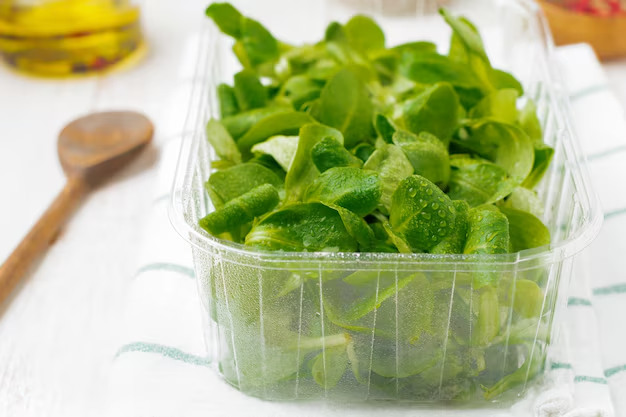How Long Do Green Beans Last in the Refrigerator? A Complete Guide to Maximizing Freshness
When it comes to prolonging the shelf life of your vegetables, understanding the specific storage requirements can be quite valuable. Green beans, whether fresh from the garden or bought at the grocery store, are a nutritious addition to your diet. Knowing how to store them properly can help you keep them fresh for as long as possible. Today, we delve into the details of storing green beans in the refrigerator, helping you maintain their crunch and flavor.
🥬 Understanding the Shelf Life of Green Beans
Fresh green beans are known for their crisp texture and vibrant color, but like all produce, they have a limited shelf life. Once harvested, green beans begin to lose their freshness. So, how long can you actually keep green beans in the refrigerator before they go bad?
Fresh Green Beans vs. Cooked Green Beans
Before diving into storage techniques, it’s important to differentiate between fresh and cooked green beans:
- Fresh Green Beans can last a week or more in the refrigerator when stored right.
- Cooked Green Beans have a significantly shorter shelf life, usually lasting about 3 to 5 days in the fridge.
🧊 Proper Storage: Keeping Fresh Green Beans Crisp
Choosing and Preparing Green Beans
The journey to longer shelf life begins with your initial selection at the market:
- Look for Firm Beans: Choose beans that are crisp and firm. Avoid any that are limp or have visible blemishes.
- Check for Brightness: Fresh green beans have a vibrant green color. Any signs of browning could indicate aging.
After buying your beans, proper preparation is key:
- Wash Before Storing: Lightly rinse your green beans to remove any dirt or pesticides, then pat them dry completely. Moisture can promote mold growth, so drying them is crucial.
Storage Techniques for Fresh Green Beans
Once prepped, follow these steps to keep your green beans fresh:
- Use a Paper Towel: Wrap the green beans loosely in a paper towel to absorb excess moisture.
- Select the Right Container: Place the wrapped beans in a plastic container or a resealable plastic bag. Leave the bag slightly open to allow air circulation.
- Optimal Shelf Placement: Store your beans in the crisper drawer of the refrigerator, where the humidity is just right to prevent wilting.
📝 Quick Tips for Fresh Storage
- Airtight is Not Always Right: Green beans need some air circulation. Fully sealed bags may trap moisture, leading to spoilage.
- Avoid Overcrowding: Storing too many beans together can accelerate spoilage. Keep them spread out enough to avoid pressure bruising.
👨🍳 Best Practices for Storing Cooked Green Beans
Cooked greens may not last as long, but by following these guidelines, you can preserve their texture and flavor:
Storing Cooked Beans
- Allow to Cool: Let the beans cool to room temperature before refrigerating to avoid condensation which creates moisture.
- Use Airtight Containers: Unlike fresh beans, cooked ones should be stored in airtight containers to lock in freshness.
- Label Your Storage: Clearly label and date your containers so you can keep track of how long they have been stored.
📝 Quick Tips for Cooked Storage
- Reheat with Care: When reheating, use a gentle heat to maintain texture and avoid making them mushy.
- Consider Freezing: If you can’t consume the cooked beans within a few days, freezing them is a great alternative.
🌿 Recognizing Spoilage: When to Toss
Knowing the signs of spoilage can prevent unpleasant surprises:
For Fresh Green Beans
- Color Changes: Discoloration, like yellowing or browning, can indicate spoilage.
- Texture and Smell: Sliminess or off smells are sure signs that your beans are past their prime.
For Cooked Green Beans
- Mold or Odor: Any visible mold or unusual odors mean you should discard the beans.
- Off Taste: Even if the other signs are not present, a strange taste is a good indication that freshness is compromised.
♻️ Additional Storage Methods
To further extend the lifespan of your green beans, explore these alternative methods:
Freezing Green Beans
Freezing is an excellent way to retain the beans' quality for several months.
Steps for Freezing:
- Blanch First: Briefly boil the beans for 2-3 minutes, then immediately cool them in ice water.
- Dry Thoroughly: Once cooled, dry them completely before freezing.
- Use Freezer Bags: Place the beans in zip-top freezer bags, removing as much air as possible.
Freezing can help maintain nutrients and flavor, providing you with an option to enjoy green beans year-round.
Canning Green Beans
If you really want to push the longevity of your green beans, consider canning. Although it requires more effort, canning can preserve beans for up to a year or more when done correctly.
Basics of Canning:
- Use a Pressure Canner: Low-acid foods like green beans must be processed in a pressure canner to ensure safety.
- Follow Tested Recipes: Always use recipes that have been tested for safety and follow them exactly.
🌟 Key Takeaways: Quick Storage Summary
Here's a simple guide to keeping your green beans fresh:
- Fresh Green Beans: Last about 1 week in the fridge if properly prepared and stored with slight air circulation.
- Cooked Green Beans: Best consumed within 3 to 5 days, stored in airtight containers.
- Freezing: Blanch and freeze for longer storage—up to several months.
- Canning: Offers the longest preservation, lasting up to a year or more.
By following these tips, you'll be well-equipped to keep your green beans fresh and delicious. This not only helps reduce food waste but also ensures you have nutritious veggies ready for any meal. Enjoy your crisp, tasty green beans!
